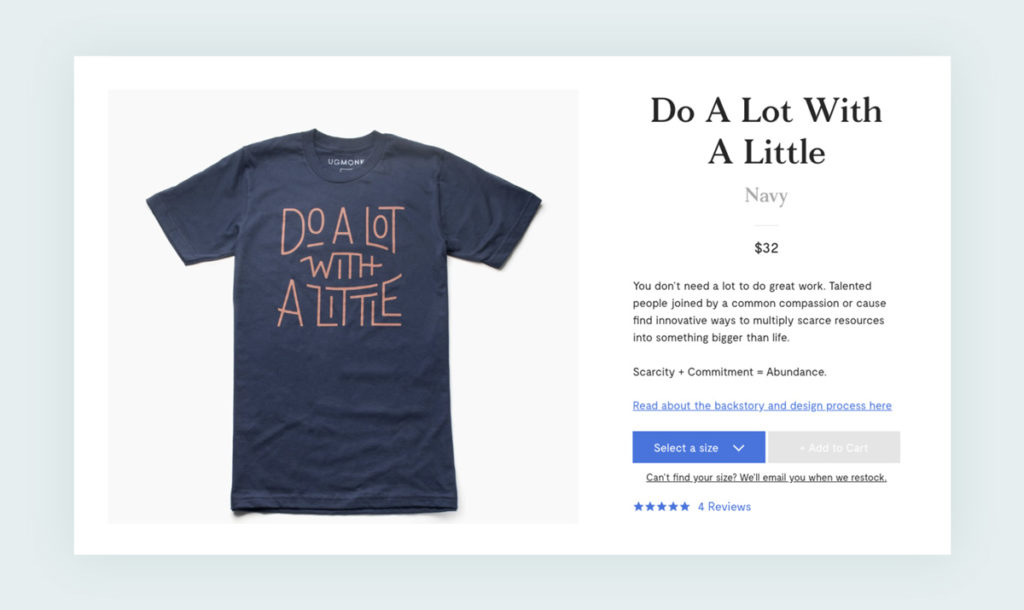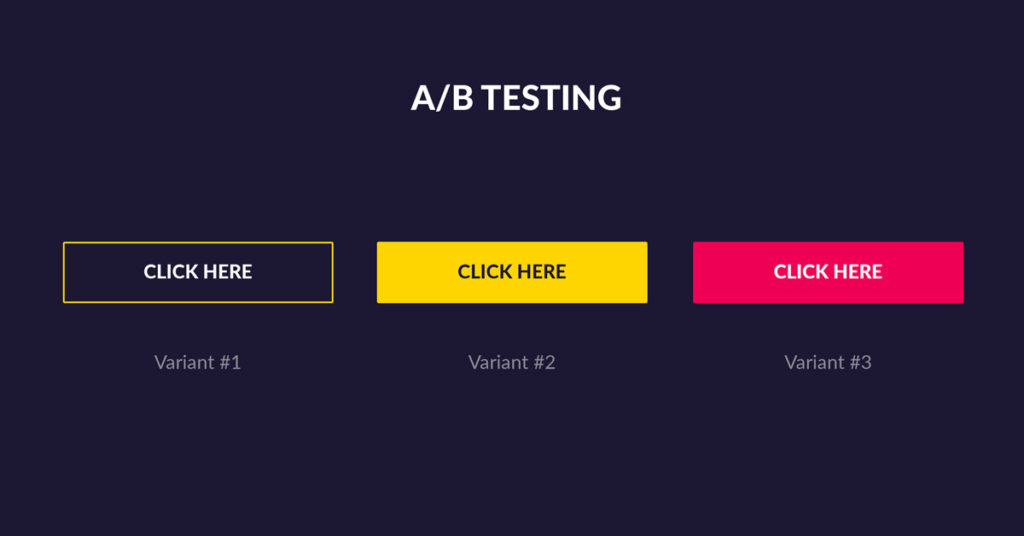Author's note
This article was originally published in 2018. It has been updated with relevant information for 2021.
There are numerous ways to optimize your e-commerce conversions. The problem is, many companies today (including major ones) are putting their efforts into the wrong tactics. This article focuses on tactics to thrive in the constantly-evolving world of e-commerce, in the stage that is beginning to be recognized as the most important: customer retention.
According to figures gathered by Invesp, 44% of companies focus more on customer acquisition, while only 18% focus on retention, but retaining a customer is five times cheaper than acquiring a new one. Further, an older but oft-cited study from Bain & Co. found that increasing customer retention by just 5% led to an increase in profits of 25% – 95%.
It’s not just about selling anymore; it’s about building a place for your customers to return again and again. Convert your 1st time purchasers them into repeat shoppers, and move them along the path to VIP.
Technology for E-Commerce Conversions

A Retail Trends report from 2018 predicts that within the next two years, 85% of all transactions will be AI-based. The report continues by stating that the following years will be the years retailers really start to understand the value behind AI. No major e-commerce company can afford to fall behind in this sector. As AI becomes more rooted in e-commerce, the gap between the capabilities of retailers utilizing AI vs those without it will grow too wide for a company without AI to stay competitive, as their Customer Acquisition Cost moves past their Customer Lifetime Value.
Tactic #1: Personalized Customer Experiences
How do know what a customer wants to see? While you can never be certain, sophisticated predictive analytics systems can come up with a pretty good idea. When a customer returns to your site, the site can separate them into a predefined customer segment, based on their data profile. The Gold Standard of personalization is the Single Customer View: a consolidation of customer data from across all channels, expressed as continuously updated one page profiles for each individual customer. This level of personalization allows for a better understanding of patterns in customer behavior, and far more targeted segmentation.
For example:
Customer A is a young man, living on a budget. The last purchase he made was a t-shirt. The site determines what is most likely to convert Visitor A, and shows him a selection of t-shirts on sale, including a special offer on a shirt similar to the one he bought last, just for him.
Customer B is an older woman in a high-income bracket who usually purchases several items of clothing in one order. The site takes a look at her profile and history and displays a special deal just for her: a bundle that includes a purse, a dress, and a hat; three items she had viewed during her last visit to the site.
With the insights gained through a Single Customer View, you can create automated campaigns that email customers with a recommendation for a product they’ll like, with a discount they’ll be interested in, sent at the optimal time for them to be checking their inbox.
Tactic #2: Automated Email Campaigns
Email is still a great way to communicate with your customers, and another area where you can use personalization to your advantage. Whether you’re sending a regular weekly newsletter, an abandoned cart scenario, or a special weekend promotion, personalization is key.
Create customer segments to talk to customers with a message that relates to their interests. Set up automatic sends that target customers based on their personal interests. Every time a customer abandons their shopping cart, they can be sent an automatic, staggered series of emails reminding them about items in their cart, and/or offering them a special discount on the specific product they were interested in.
If you have all of your customer information and automation tools in one main dashboard, it’s easy to create detailed automation for whatever scenario you can think of: email, SMS, and push notifications with precise timing for every send.
Tactic #3: Value Segmentation
Customer Lifetime Value (CLV) estimates how much customers will spend throughout their time as your customer. With this data, you can segment your customers based on the long-term value they represent.
You’ll likely find that the 4% of your customers with the highest CLV account for the majority of your revenue. These are your VIPs. With your most valuable customers identified, you can start to treat them accordingly with special deals. Once you have your all your segments (EX: bottom tier; mid-tier; VIP), you’ll know the average order value and order frequency for each tier, and you can focus on converting customers in the bottom tier up to the middle tier, and customers in the middle tier up to VIP status.
Tactic #4: Converting Customers into VIPs
It’s not enough to focus on your existing VIPs; you should always be searching for customers who fit the profile to become VIPs in the future. What do these look like? It’s different for every company, but predictive analytics can measure the purchase and churn patterns of your current VIPs, and find new customers that will likely fit the bill – even after just one purchase! That’s one more important group to nurture.
Communication for E-Commerce Conversions

The customer’s desire for authenticity has been brewing for years: a 2014 study of 12,000 consumers across 12 markets found that 87% said it was important for companies to act with integrity at all times. Compare that to the only 72% that factored innovation into their buying decisions, and the 71% that cared about unique new products, and you see how important authenticity really is.
Consumers are more informed than ever before. If they don’t trust your message, they’ll move on to somewhere else.
Tactic #1: Create Value in Your Product Descriptions
Yes, you want a copy that sells, but you don’t want a copy that looks like it’s selling. Instead of a pitch, use your product descriptions to create value for the customer. What can you tell them about this product to help them make an informed decision? How can you give them this information in the simplest, most digestible way?
Write openly and conversationally; address your customers like living, breathing people, and you’ll keep them coming back.
EXAMPLE #1: Ugmonk

*Source: shop.ugmonk.com
Ugmonk is a fashion e-commerce retailer with unique (and often pricy) products. It would be easy to just write: “T-shirt with text: ‘Do a lot with a little’” and call it a day. But Ugmonk does more to justify the price, writing conversationally about the thought process behind the shirt and what it represents for the buyer. They even have a link to the backstory and design process for the buyer interested in detail.
EXAMPLE #2: Zara

*Source: zara.com
Zara is a well-known clothing brand, yet their product copy is lacking. It gives a basic description of the product, but nothing that indicates what makes it special, what makes it worth buying. Beyond that, the page placement of the copy makes it difficult to read it while getting a full view of the shirt, something that could cost them that extra conversion.
Tactic #2: Apply Proactive Communication
Communication is key in any relationship, including the one you have with your customers. Are you changing your return policy? Make sure your customers hear about the details before you make the change. In general, just keep your customers informed; they always should feel like they are in-the-loop.
Tactic #3: Construct a Self Service Portal
Steven Van Bellegham’s 2013 study, The Self Service Economy, found that all over the world, customers are becoming more demanding. They don’t just want friendliness, transparency, and their problem solved in one interaction: they want that all to happen now. 55% of consumers who contact a company through Twitter or FB now expect an answer within four hours. And 86% of consumers who call the company directly expect the same.
Rather than attempting to scale that level of customer service, many companies have supplemented their customer interactions with a Self Service Portal: a section of the site visitors can use to solve their problems quickly and easily, without outside help. This section may have an FAQ page, discussion forums, and a form to submit issues.
Data is also a driving force behind Self Service:
62% [of consumer respondents] ask companies to use their data to make the buying process faster & easier. 81% ask companies to use client data to shorten waiting times when they have a complaint.
Finally, a Self Service Application is something that 70% of consumers now expect. Don’t let your company find itself lacking.
Methodology for E-Commerce Conversions

Find the drive to A/B test and experiment with simple ideas. Starting small is better than not starting at all.
Every business is different, and the only way to know if you’re doing the right thing is to test it, and continue to test it. Don’t just rely on industry best practices; you need to make sure your optimizations are working for you. Should that Add to Cart button be green or should it stay red? Would my free shipping banner work better on the homepage or the product page? Test it.
A/B testing is a popular way to use segments of similar customers in order to find the most positive response. You set one segment as the Control Group, which keeps the original design, and then try as many variations as you want with additional segments.
You can use A/B testing to optimize photos, email formats, recommended items, button shapes, anything you can think of. With that in mind, we’ll end this article with two real-world examples of great testing done by major companies.
Netflix – Viewing Destination for TV and Film
When Anna Blaylock joined the Product Design department at Netflix, she pitched her big idea: show potential customers the full range of available content before they sign up. She wasn’t the first to suggest it. In fact, Netflix had surveyed non-members and asked them what one thing they would want to know before signing up. The most popular answer, by an overwhelming margin, was to know what movies and TV shows were available. Netflix decided to A/B test the idea.
Netflix ran a series of A/B tests to see which version would convert the best, pitting the control (their standard page with no selection info and one simple “Start Your Free Month” CTA) against different variations that detailed the content available on the site. The control group performed best.
They tested it again against different variants, and again, the control group won. They tried it another time with new variants. Then they tried it a fourth time. A fifth. But each time the control still won.
Conclusion: Challenge your assumptions. Even your customers don’t necessarily know what they want. The only way to find something out for sure is to test it.
Adore Me – E-Commerce Lingerie Retailer
While A/B testing is common practice for fashion e-commerce companies, Adore Me takes it a step further. Adore Me A/B tests all the images on their site every month, and they test everything you could think of: should the model’s hand be on her hip or on her head? (Apparently, hand on head can double sales). Do blonde models lead to more lingerie sales? (Nope).
Through rigorous testing, Adore Me found that, for their business, using the right model for a product matters even more than price. These seemingly minor tests have helped Adore Me grow their brand and maximize their sales. They now also have a huge subset of data they can continue to work from.
Conclusion: Keep testing. Something that works today may not work next month. Try new variations. Don’t ignore the little changes that can maximize the sale. (These things are easier to put together if you’re working with from one main dashboard with all your data, tests, and results together).
The more specific you can get to the individual customer, the more powerful your message will be, and the more likely the conversion. Solutions exist for companies ready to improve their personalization capabilities, their automated email campaigns, their predictive analytics, and their A/B testing.
If you’d like to hear how Exponea, a provider of these solutions, can help your company, be sure to contact us.
Want more? We’ve got you covered
What Should You Read Next? Author's Hand-Picked Recommendation:
The Formula for E-Commerce Success Revealed
Learn the metrics that matter, and how to apply them to your company to increase conversions and revenue.




 Blog
Blog








